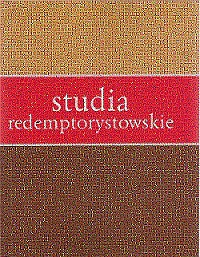Wyobrażenia Boga Ojca w ikonografii nowożytnej w kontekście dogmatu trynitarnego. Kanon obowiązujący w sztuce zachodniej i wschodniej
Perceptions of God the Father in the iconography of modern in the context
of the Trinitarian dogma. The canon of force in Eastern and Western art
Author(s): Olga CyrekSubject(s): Christian Theology and Religion
Published by: Warszawska Prowincja Redemptorystów
Keywords: God the Father; and the Ruthenian Byzantine iconography; Trinity; hypostasis; Everlasting Days
Summary/Abstract: The article describes the presentation of God the Father or the First person of the Trinity wchich were created in modern times in both the Byzantine and Russian art, as well as in Western Europe. In the East, showing God the Father in human form was considered to be inconsistent with the provisions of the church. However, icons are often formed in which God appeared as an old man (Sabaoth). God the Father has always been transcendent to the word, could not be directly visible but manifested Him the Son and Holy Spirit. Therefore, the first Divine Hypostasis is depicted on the icons in the company of two other hypostases. This was possible on the perceptions of the whole Trinity. The iconographic scheme called the Old Testament Trinity, God the Father as the Son of God and the Holy Spirit occurs in the form of an angel. While the New Testament Trinity icon takes the form of an older man and is revealed as the eternal days. In the art of the western part there are images in which God the Father is shown in human form, while in Eastern art often is not God the Father is shown the front but its presence is suggested on the basis of such themes as the luminous radius, cloud, Manus Dei, which opens sphere of the sky. This is particularly evident in icons representing Christ and the ideas of the whole of God reveals Himself in three persons.
Journal: Studia Redemptorystowskie
- Issue Year: 2012
- Issue No: 10
- Page Range: 224-249
- Page Count: 25
- Language: Polish

